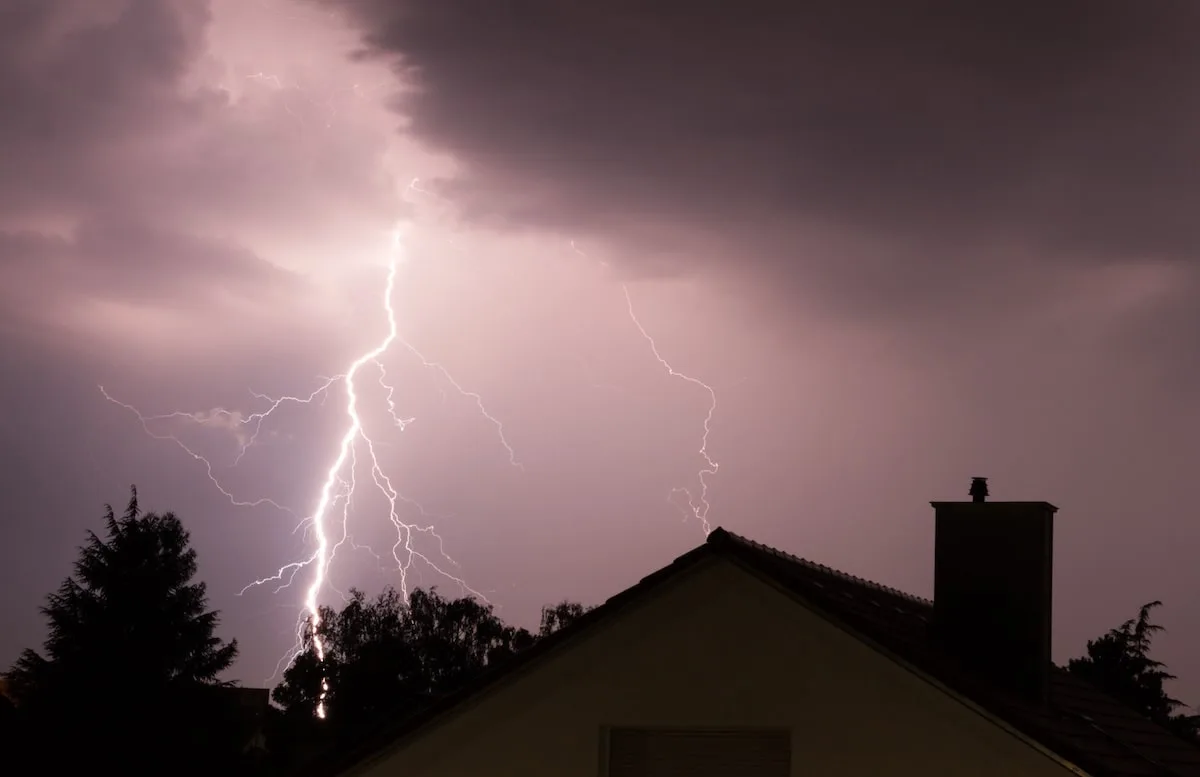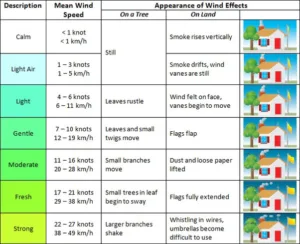Shielding Homes: The Art of Crafting a Resilient Roofing Strategy for Storm Season
Introduction
Storm season, with its tumultuous winds and torrential rains, poses a significant threat to the structural integrity of residential properties. This period of atmospheric turbulence, typically experienced in certain regions during specific months of the year, can wreak havoc on rooftops that are ill-prepared for its onslaught. A well-planned roofing strategy becomes paramount in safeguarding homes from the destructive forces unleashed by these tempestuous weather conditions.
A Brief Overview of Storm Season and Its Impact on Roofs
Storm season varies across different regions; however, it is commonly characterized by an increase in severe weather events such as hurricanes, tornadoes, and heavy rainstorms. These natural phenomena pose a considerable risk to roofs due to their ability to generate powerful winds and deliver excessive precipitation within a short span of time.
Roofs are on the frontlines when it comes to protecting homes from nature’s wrath. Their primary function is to provide shelter and act as the first line of defense against harsh elements.
Therefore, during storm season, roofs bear the brunt of wind-driven debris battering against their surface, constant exposure to heavy downpours that can lead to water infiltration, and prolonged exposure to humid conditions conducive for mold growth. Neglecting the impact that storm season can have on roofs leaves homeowners vulnerable to potential damage that could result in costly repairs or even necessitate complete roof replacements.
The Importance of Having a Well-Planned Roofing Strategy
In light of the risks posed by storm season, having a comprehensive roofing strategy becomes essential for homeowners aiming to fortify their abodes against these turbulent atmospheric conditions. A well-planned approach not only involves taking preemptive measures before storms hit but also includes ongoing maintenance throughout the year. By implementing a well-thought-out roofing strategy, homeowners can minimize the potential damage caused by storms and ensure the longevity of their roofs.
This entails regular inspections to identify any existing vulnerabilities or signs of wear and tear that may exacerbate during storm season. Additionally, a proper roofing strategy accounts for reinforcement measures that enhance the roof’s strength to withstand powerful winds and heavy rainfall.
Ultimately, investing time and resources into a well-planned roofing strategy is a proactive approach that pays dividends in protecting homes during storm season. In the following sections, we will delve into the specifics of storm season, the crucial role roofs play in safeguarding homes, and the elements necessary for an effective roofing strategy.
Understanding Storm SeasonDefinition and Characteristics of Storm Season in Different Regions
Storm season, also known as the rainy or hurricane season, varies in duration and intensity across different regions. In areas prone to tropical climates, such as coastal regions and islands, storm seasons often coincide with the summer months. These periods are characterized by increased atmospheric moisture, resulting in frequent thunderstorms and heavy rainfall.
On the other hand, regions with a continental climate experience storm seasons during transitional periods like spring and fall when warm and cold air masses collide. During storm seasons, weather patterns become more volatile, leading to extreme climatic events that can pose a serious threat to both human lives and property.
In coastal areas where hurricanes are common, storm season typically spans from June to November. These powerful storms can bring fierce winds exceeding 74 miles per hour (119 km/h) and torrential rain that lasts for days. Types of Storms Commonly Experienced During This Season
Storm seasons bring an array of severe weather phenomena that can wreak havoc on roofs if not properly prepared for. One of the most destructive types of storms experienced during this period is hurricanes.
These massive rotating storms form over warm ocean waters near the equator and are characterized by high wind speeds exceeding 74 miles per hour (119 km/h). The combination of strong winds, heavy rainfall, and storm surge poses significant risks to buildings’ structural integrity.
In addition to hurricanes, tornadoes are another menacing force during storm seasons. These violent rotating columns of air can cause widespread destruction within seconds.
While tornadoes may not have the same geographical reach as hurricanes, they can still inflict severe damage on roofs due to their intense updrafts lifting materials off structures or even causing entire roofs to be ripped off. Apart from hurricanes and tornadoes, heavy rainstorms are also common occurrences during storm seasons.
These storms bring copious amounts of rainfall, potentially leading to flash floods and roof leaks. When roofs are not equipped to handle excessive precipitation, water may seep through cracks, damaged shingles, or poorly sealed joints, causing significant structural damage and promoting the growth of mold and mildew. Potential Damage Caused to Roofs During Storms
Storm seasons can expose roofs to a range of damages that may compromise their integrity. The strong winds accompanying hurricanes and tornadoes can dislodge or tear away shingles, leaving the underlying structure vulnerable to water intrusion.
Furthermore, flying debris propelled by these powerful storms can impact roofs directly, causing punctures and fractures. Heavy rainstorms also pose risks as prolonged exposure to moisture can weaken roofing materials over time.
This leads to the deterioration of protective layers such as asphalt granules on shingles or the corrosion of metal flashing. Additionally, excessive rainfall may overwhelm gutters and downspouts if they are clogged or improperly sized, potentially causing water to pool on the roof’s surface or overflow onto walls.
It is crucial for homeowners to understand the potential damage that storm season poses so they can take necessary precautions in protecting their roofs from these destructive forces. Implementing a well-planned roofing strategy will not only mitigate risks but also ensure the longevity of their homes during these turbulent times.
The Role of Roofing in Protecting Homes
Importance of a strong and durable roof for overall structural integrity
A strong and durable roof is not merely an essential component of a house; it serves as the guardian that shields the entire structure from the wrath of nature’s elements. A well-constructed roof acts as a first line of defense against rain, snow, wind, and other potential hazards that storm season may bring.
It can withstand the impact of heavy rainfall and prevent leakage into the interior spaces, ultimately safeguarding the underlying structure from water damage or even collapse. The strength of a roof also plays a vital role in supporting other building elements such as walls and ceilings, ensuring their stability during extreme weather conditions.
Functions of a roof: protection from elements, insulation, energy efficiency, aesthetics
The multifaceted functions of a roof extend beyond its primary purpose of providing protection against external forces. One crucial aspect is insulation—efficient roofing materials and techniques help maintain comfortable indoor temperatures throughout the year by minimizing heat loss during cold seasons and reducing heat gain during hot seasons.
This insulation feature not only enhances living comfort but also contributes to energy efficiency by reducing reliance on cooling or heating systems. Moreover, a well-designed roof significantly influences a home’s aesthetic appeal.
The right choice in roofing materials, colors, and styles can greatly enhance the overall architectural attractiveness of a house while complementing its surroundings. A visually pleasing roof not only adds value to the property but also contributes to creating an inviting atmosphere for both residents and visitors alike.
Impact of a damaged roof on the rest of the house (e.g., water leaks, mold growth)
The consequences that arise from neglecting or underestimating the importance of maintaining a sound roofing system can be far-reaching. A damaged or compromised roof allows water to infiltrate into various parts of the house, leading to water leaks that seep into walls, ceilings, and even foundations.
Over time, this moisture intrusion can result in mold growth, which poses significant health risks to occupants and necessitates costly remediation efforts. Furthermore, a deteriorating roof can compromise the structural integrity of the entire house.
The accumulation of moisture due to leaks can weaken the wooden framework supporting the roof, potentially leading to sagging or even collapse. The damage may extend beyond the roof itself if left unaddressed, affecting other components such as electrical systems or insulation materials.
Consequently, repairing or replacing a damaged roof is not only an investment in preserving the property’s value but also an imperative measure for ensuring long-term safety and comfort for those residing within it. A strong and durable roof plays a pivotal role in protecting homes from harsh weather conditions.
Its functions extend beyond providing shelter; it also contributes to insulation efficiency, enhances energy-saving capabilities, adds aesthetic value to the overall design, and prevents potential water leakage and mold growth that could compromise both structural integrity and residents’ well-being. Recognizing these factors underscores the necessity of implementing a well-planned roofing strategy for storm season and maintaining regular inspections and maintenance schedules throughout the year.
Elements of a Well-Planned Roofing Strategy for Storm Season
Regular inspections and maintenance to identify potential issues before the storm hits
Regular inspections and maintenance are the foundation of a well-planned roofing strategy for storm season. It is vital to have a professional roofer assess your roof regularly, preferably before the storm season arrives.
Professional roofers possess the expertise and experience to detect any underlying issues that may compromise your roof’s integrity during storms. By conducting thorough inspections, they can identify weak spots, deteriorated shingles, or damaged flashing that might lead to leaks or more significant damage when subjected to heavy winds and rain.
Hiring professional roofers vs DIY inspections
While some homeowners may be inclined towards DIY inspections as a cost-saving measure, it is crucial to acknowledge the value of professional expertise in this domain. Hiring professional roofers ensures a meticulously thorough evaluation of your roof’s condition. Roofing professionals possess an eye for detail honed through years of training and practical experience.
They are adept at identifying subtle signs of damage often missed by untrained eyes. Moreover, their knowledge allows them to recommend suitable repairs or maintenance procedures based on precise assessments.
Common signs of roof damage to look out for (e.g., loose or missing shingles, cracks)
Recognizing common signs of roof damage is imperative in maintaining a well-prepared roofing strategy for storm season. Loose or missing shingles are among the most apparent red flags indicating potential issues with your roof’s structure. Cracks in shingles may also indicate compromised integrity due to age, weathering, or impact from debris during previous storms.
Additionally, be vigilant about water stains on ceilings or walls as they suggest leaks have infiltrated your home due to damaged roofing materials. It is essential not to overlook these warning signs as they can escalate into more significant problems during storm season, leading to costly repairs or even compromising the safety and comfort of your home.
Importance of addressing minor issues promptly to prevent major damage later
Addressing minor issues promptly is a key aspect of a well-planned roofing strategy for storm season. Even seemingly insignificant problems can escalate rapidly when confronted with the powerful forces of nature during storms.
A loose shingle or a small crack may seem inconsequential at first, but these vulnerabilities can worsen under heavy wind gusts and torrential rain, resulting in significant damage to your roof’s structure. By promptly addressing these minor issues through repairs or maintenance, you not only safeguard your roof but also prevent potential leaks, mold growth, and interior damage that can be costly to remediate.
Reinforcement measures to enhance roof strength
To fortify your roof against the harsh elements of storm season, it is essential to consider reinforcement measures that enhance its strength. One effective step is installing hurricane straps or clips that secure the roof trusses to the walls more firmly, reducing the risk of structural failure during high winds.
Additionally, reinforcing vulnerable areas like eaves and gable ends with extra bracing can provide added protection against wind uplift. Moreover, considering impact-resistant shingles made from durable materials such as asphalt or metal can significantly increase your roof’s resilience.
Conclusion
A well-planned roofing strategy for storm season encompasses regular inspections and maintenance conducted by professional roofers who possess the expertise to identify potential issues before they escalate into costly problems. Recognizing common signs of damage such as loose shingles or cracks allows homeowners to address minor issues promptly and prevent major damage during storms. Furthermore, reinforcing roofs through measures like hurricane straps and impact-resistant shingles enhances their strength and resilience against powerful weather conditions.
By proactively implementing these strategies, homeowners can ensure their roofs withstand storm season’s challenges, safeguarding their homes from water infiltration, interior damage, and structural compromise. With a secure and well-maintained roof, homeowners can face storm season with confidence and peace of mind, knowing that their homes are protected against nature’s fury.



